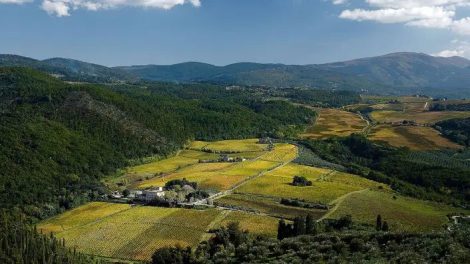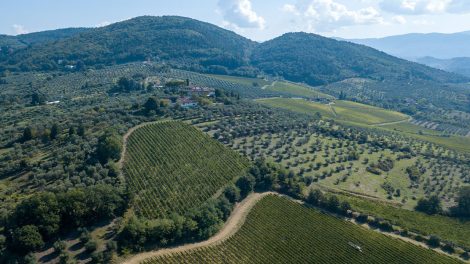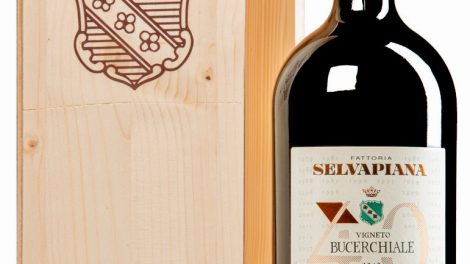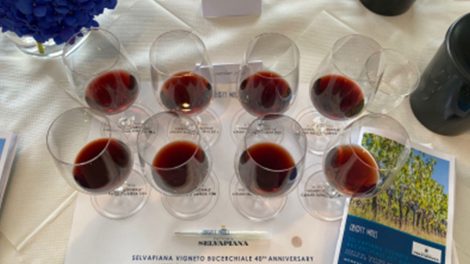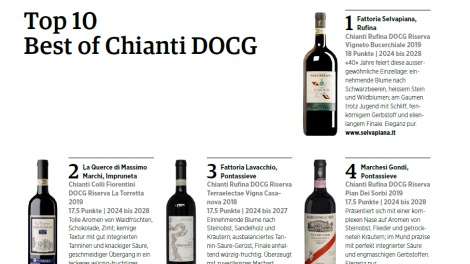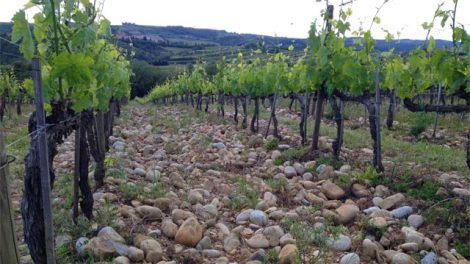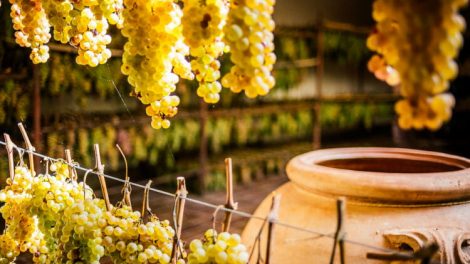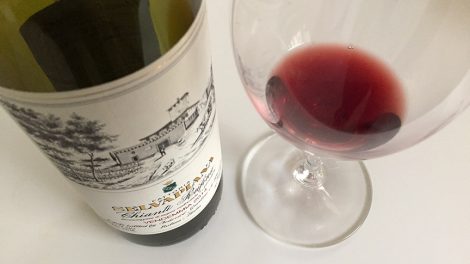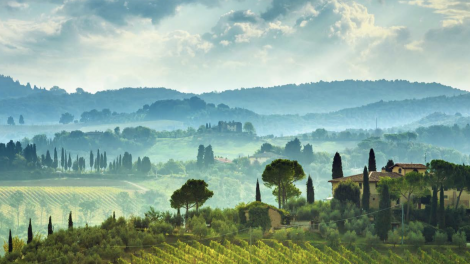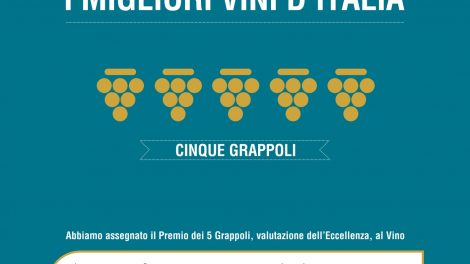Rassegna Stampa
Fattoria Selvapiana su jancisrobinson.com per il 40° Anniversario di Vigneto Bucerchiale
In occasione del 40° anniversario del Chianti Rufina Riserva DOCG Vigneto Bucerchiale, Fattoria Selvapiana è protagonista di un articolo dedicato sul sito Jancisrobinson.com. Riportiamo l'articolo completo qui sotto, mentre a questo il link è possibile leggere l'articolo su Jancisrobinson.com. Single-vineyard wines are all the rage all over the world now but the Selvapiana estate in Chianti Rufina has been producing its Bucerchiale bottling since 1979 and, with the recent release of the 2019, is celebrating the wine’s 40th anniversary. I’ve long enjoyed the special character of Selvapiana’s wine (and olive oil). The wines have always been lighter and fresher than many Chianti Classicos, thanks to the cooling breezes that reliably blow down the Sieve Valley, one of very few Apennine valleys that run north–south. The Bucerchiale vineyard is at 220 m (660 ft), much lower than the highest Chianti Classico vineyards. Selvapiana, a 245-ha (605-acre) estate just north of the town of Pontassieve east of Florence, has been in the Giuntini family since 1827 and is now run by Federico Giuntini Masseti, who brought the eight wines described and pictured below to our London flat to celebrate the 40th anniversary of Bucerchiale and to demonstrate just how well it ages. (I was all set to taste the wines last September but couldn’t owing to a cancelled flight.) He is now assisted by Niccolo, the oldest of his four sons. The estate has 22 ha of olives and 60 ha (148 acres) of vineyards, 95% of them planted with Sangiovese. Most of the vineyards, on the foothills of the Apennines, face west but the 12-ha (30-acre) Bucerchiale vineyard pictured above faces south-west. It was first planted in 1968 and there has been some replanting since then, although vines have to be at least 10 years old before their produce is considered for the single-vineyard bottling. Bucerchiale is produced only in the best years so there was no 1980, 1984, 1997, 1989, 1991, 1992, 1997, 2001, 2002, 2008, 2021 and very little 2014. So clearly the wine is not primarily designed as a money-making exercise. Indeed the estate as a whole ran at a loss until the 1980s ‘because it was a Chianti’ according to Giuntini Masseti, who said the turning point came when sharecropping farmers were replaced by hired staff. Giuntini Masseti’s predecessor Francesco Giuntini (who was married to an Antinori so very much part of the Tuscan establishment) was determined that this wine from his best vineyard should be 100% Sangiovese. This was at a time when Tuscany’s signature grape was viewed as something decidedly inferior to the French imports such as Cabernet and Merlot that were then so fashionable in Italy. It’s worth pointing out that when the wine was launched in 1979, 100% Sangiovese Chianti was illegal. Initially the wine was labelled with the logo of the VIDE association of ambitious Italian wine producers encouraged by the late wine writer Luigi Veronelli. Giuntini Masseti took over the estate in the late 1980s and instituted longer macerations, ‘sometimes too long’, he admits. In his search for purity he has settled on 30 to 35 days with no submerged cap. Fermentations are always spontaneous. In the 1970s Bucerchiale’s Sangiovese grapes weren’t picked until the end of October. Today it’s more likely to be late September although in 2019 it was mid September. Giuntini Masseti admitted that another climate-change effect is that pHs have been on the rise and he no longer chaptalises. The concentrator, as in so many wineries that invested in them in the late-20th-century era in which alcohol was so celebrated, has been packed away. At one stage – the concentrator stage – all the wine was aged in barriques. ‘We made some mistakes – too much new oak, especially with the 1994.’ Up to and including the glorious 1985 vintage the wine was aged in big, old chestnut casks. Nowadays the wine is aged in a 50:50 mix of small and big oak and Giuntini Masseti feels confident he is making better and better wine – ‘purer’. In this tasting of 2019, 2013, 2009, 2006, 1999, 1985 and the very mature 1982 and 1979, the debut vintage, I really appreciated the vintage differences. The evolution of the 1979 suggests that the 2019 has a great future ahead of it. For the moment, the standout vintage is the 2013, but the 2006, 1999 and, especially, 1985 (remember Sassicaia 1985?) are also really inspiring, demonstrating there is more to Chianti than Chianti Classico. The wines are presented below in the order tasted. See also Bucerchiale 2003 back to 1999 written in 2007, on the occasion of the tenth anniversary of Selvapiana’s UK importers Liberty Wines. Selvapiana, Vigneto Bucerchiale Riserva 1979 Chianti Rufina Very little sediment because it spent more than five years in old barrels! Transparent ruby. Light-bodied but with a fresh and minty nose. Light and chestnutty. Fine and fresh. Only the vestiges of the fruit is left and it’s now a little mushroomy. 12% Drink: 1984– 2014 16.5 Selvapiana, Vigneto Bucerchiale Riserva 1982 Chianti Rufina Mid ruby. Light nose. Lots of acidity and freshness and pure, classic Sangiovese. Light-bodied but well knit together and pure. A bit drying on the end. But there’s still some vitality. 13% Drink: 1987 – 2016 16.5 Selvapiana, Vigneto Bucerchiale Riserva 1985 Chianti Rufina A stellar vintage with a little frost in spring; the crop was reduced by 30%. According to Federico Giuntini Masseti, ‘1985 demonstrated that Sangiovese wasn’t the problem but the way we grew it – we needed to reduce yields’. Dark garnet still! This tastes like a young wine! Gorgeous! Freshness and tang and very pure Sangiovese. Very much a food wine. Long and quite delicious. 12.5% Drink: 1992 – 2030 18.5 Selvapiana, Vigneto Bucerchiale Riserva 1999 Chianti Rufina Dark crimson. Firm and concentrated. This almost smells as though there were some Cabernet in it! Big and sweet palate entry and firm finish with still quite a bit of tannin. Very serious wine that has aged very slowly. 14% Drink: 2007– 2030 17 + Selvapiana, Vigneto Bucerchiale Riserva 2006 Chianti Rufina From a neglected but very classic vintage. Deep garnet. Very pure and polished tannins. Really convincing fruit and chewiness. Rich and round with a note of unsweetened chocolate. 14.5% Drink: 2015– 2035 17.5 Selvapiana, Vigneto Bucerchiale Riserva 2009 Chianti Rufina Transparent garnet. Closed nose. Lots of fine tannins and embryonic fruit. Very tight and a bit grainy-textured on the end. Needs time – more time than the 2013. 14.5% Drink: 2024– 2040 16.5 ++ Selvapiana, Vigneto Bucerchiale Riserva 2013 Chianti Rufina Cooler vintage. Notably savoury nose with notes of Marmite (yeast extract). Fine and richly fruited, this wine offers masses of pleasure already. Lovely for drinking now, with a mintiness and rich fruit. 14.5% Drink: 2021– 2040 18 Selvapiana, Vigneto Bucerchiale Riserva 2019 Chianti Rufina Aged for 18 months in oak and then at least a year in bottle. First bottle: TCA affected. Second bottle: transparent garnet. Different nose from the older vintages! Sweeter and still very fresh and this difference is possibly just because the wine is younger and lower in acidity. Quite a bit of fine tannin. Still very youthful. 14% Drink: 2026 – 2042 £36 RRP 16.5 ++
Vigneto Erchi Riserva: Decanter premia l’eccellenza di Selvapiana e del progetto Terraelectae
Il Vigneto Erchi Riserva Chianti Rufina 2018 riceve un'altra importante conferma da parte della prestigiosa rivista Decanter. Con l'assegnazione di un ottimo voto di 95 punti, il vino si distingue per la sua eccellente qualità e viene elogiato da Michael Apstein, un noto giornalista e giudice enologico internazionale. Questo vino prodotto dalla Fattoria di Selvapiana fa parte del progetto Terraelectae, che è un'iniziativa dei produttori aderenti al Consorzio Chianti Rufina, che mira a conferire una caratterizzazione maggiore ai loro vini rispetto a quelli previsti dal disciplinare vigente nella Val di Sieve. Per poter utilizzare il marchio, i vini devono soddisfare alcuni requisiti rigorosi, come essere ottenuti esclusivamente da uve prodotte nella zona di produzione Chianti Rufina DOCG, avere una base ampelografica al 100% di Sangiovese, riportare in etichetta la menzione "Vigna" o "Vigneto" e essere tracciati. Inoltre, i vini devono essere della categoria Riserva, soddisfare i parametri del disciplinare, avere una produzione massima di uva/ha di 70 Qli/ha, un titolo alcolometrico non inferiore al 12,5% vol., 30 mesi di invecchiamento di cui 18 in legno e almeno 6 in bottiglia. L'utilizzo di recipienti tipo "fiasco" è vietato. L'articolo completo che segue fornisce ulteriori dettagli su questa affermazione di qualità. DECANTER PREMIUM 11GEN23 ANOTHER ADDITION TO THE CHIANTI QUALITY PYRAMID: TASTING RÙFINA’S TERRAELECTAE WINES In response to Chianti Classico’s top category Gran Selezione, producers in Chianti Rùfina have added the new category Terraelectae to their quality pyramid, starting with the 2018 vintage. Michael Apstein January 11, 2023 Federico Giuntini Masseti, president of the Chianti Rùfina Consorzio, says that the purpose of Terraelectae – Chianti Rùfina’s new top-tier category- is to highlight the special character of the Sangiovese-based wines from Rùfina’s unique terroir. The producers hope the category will allow Chianti Rùfina to emerge from Chianti Classico’s shadow and be considered a top Tuscan DOCG, like Brunello. Scroll down to see tasting notes and scores for the 10 inaugural Terraelectae wines Chianti Rùfina, the smallest of the sub-regions of the greater Chianti area – just one-tenth the size of Chianti Classico – lies about 30 minutes by car northeast of Florence. With a more rugged terrain and vineyards that lie at a higher elevation, the region has an overall cooler climate compared to Chianti Classico, which gives the wines a more savory and engaging wild component – Gerardo Gondi of Tenuta Bossi, one of Rùfina’s top estates, aptly calls the wines ‘mountain Chianti.’ Faye Lotero, owner of Fattoria Lavacchio, another leading estate, believes that Chianti Rùfina has an advantage with climate change because of its elevation and wind-swept terroir. Meanwhile, the under-the-radar status of Chianti Rùfina is a boon for consumers because the wines deliver more than their prices suggest. Terraelectae requirements The requirements for Terraelectae differ from those of Chianti Classico’s Gran Selezione category, which need not come from a single vineyard, nor be made entirely from Sangiovese. In contrast, to be included in the new Terraelectae category the wines must meet Chianti Rùfina Riserva standards, come from a single vineyard, and be made exclusively from Sangiovese. Other regulations require that Terraelectae be made from a reduced yield (70 quintals/ha) and undergo 30 months of ageing prior to release, 18 of which must be in barrel and six in bottle. The specifics of barrel ageing – size and age of the barrel, and the type and origin of the wood – are left to individual producers. Each producer in Chianti Rùfina – there are only about 20 of them – can select a single vineyard for their Terraelectae bottling. If the wine meets the requirements and receives approval from a group of Chianti Rùfina producers, it will carry the Terraelectae moniker on the label. The producers themselves, not a regulatory authority, have set the criteria for inclusion and judge the quality and character of the wines. Ten producers have designated a Terraelectae with the 2018 vintage: Tenuta Bossi, Colognole, Frascole, Marchese Frescobaldi, Grignano, Fattoria Lavacchio, Fattoria Selvapiana, Villa Travagnoli, Castello del Trebbio, and I Veroni. That three more producers – Podere Il Pozzo, Fattoria Il Lago and Ormae Vinae – opted to wait and release their first Terraelectae with the 2019 or 2020 vintage is either a sign that that the self-policing by producers may be working, or is just an example of inefficiency or indecisiveness. Predicting the future success of new wine projects is hazardous. Who would have predicted the popularity of Bolgheri wines? That said, Terraelectae has at least one thing going for it – SuperTuscan wines are not common in Chianti Rùfina, so the confusion that has arisen in Chianti Classico about whether a producer’s Gran Selezione or their SuperTuscan sits atop the quality pyramid is unlikely to surface. As the tasting notes indicate, the 2018 Terraelectae releases showed very well, with almost all receiving more than 90 points. If the wines remain high-quality and a unique expression of Sangiovese reflecting the distinctive terroir of Chianti Rùfina, the Terraelectae moniker on the label will be useful to consumers. Self-policing by producers will be critical and will ultimately determine whether the Terraelectae designation elevates the entire region or is meaningless. The inaugural Terraelectae wine: Fattoria Selvapiana, Vigneto Erchi Riserva, Chianti Rufina 2018 Fattoria Selvapiana, one of the area’s top producers, designated their 5ha Vigna Erchi, a site that has more iron in the soil compared to their iconic Bucerchiale vineyard. Owner Federico Giuntini thinks the difference in terroir explains why Vigna Erchi produces a bolder wine. Extraordinary elegance and a silky suaveness... Points 95
Fattoria Selvapiana su Falstaff.com per il 40° Anniversario di Vigneto Bucerchiale
In occasione del 40° anniversario del Chianti Rufina Riserva DOCG Vigneto Bucerchiale, Fattoria Selvapiana è protagonista di un articolo dedicato sul sito Falstaff.com. Riportiamo l'articolo completo qui sotto, mentre a questo il link è possibile leggere l'articolo su Falstaff.com. First created in 1979, the 2019 vintage of Bucerchiale marks the 40th anniversary of this single-vineyard wine that has come to define the area of Chianti Rufina. Its evolution also traces the momentous changes in the Italian wine industry over that time. The Bucerchiale vineyard Bucerchiale is a south-west-facing vineyard in the cooler Chianti zone of Rufina, to the north of Florence. The area has always been cooler than the Chianti Classico zone that extends south of Florence to Siena, but that gives Rufina wines their characteristic freshness and elegance. Bucerchiale, says winemaker and co-owner Federico Giuntini Masseti, “has always been the best podere,” or smallholding, on the farm. Even in the past, when it was still dedicated to mixed farming. Defiance Giuntini said: “In 1979 it was unique to produce 100% Sangiovese and from a single vineyard. It was the beginning of the renaissance of Tuscan wine.” At the time, the law still mandated that in order to call a wine Chianti, it had to contain Trebbiano – a sign of the times that valued quantity over quality. But Selvapiana wanted quality and made and bottled the Sangiovese grown in the Bucerchiale vineyard separately – defiantly labelling it Chianti Rufina Riserva. Giuntini remembers that while the law mandated Trebbiano – and Trebbiano was indeed planted in the vineyard because law enforcement checked vineyards rather than cellars – they made this 100% Sangiovese wine. Historic context David Gleave MW, founder of Liberty Wines in the UK and importer of Selvapiana since 1986, said: “At that time there was no market for these wines, you could not sell an expensive Chianti – but they made it and kept it in their cellar. Most of the old vintages were just bottled and sat in the cellar to wait for a better future. And the better future arrived when we started to sell outside Italy.” Gleave filled in more history: “I think a lot of estates, when we go back historically in the post-war years, there were not selling wine in bottle, they’d sell wine to big negociants – Ruffino, Antinori, Melini. But estates like Selvapiana had a tradition of bottling, they started bottling after the First World War; Antinori had started bottling wines just after the turn of the century – and they were family.” In the interwar years Selvapiana’s wines were sold in restaurants in Milan and Rome – but the Germans “drank the cellars empty.” The turnaround The post-war years were meagre and hard. Yet there was a drive for quality. This history of bottling their own wine was one strand of Selvapiana’s philosophy. Another, according to Gleave, was Italian wine writer and journalist Luigi Veronelli who strongly advocated for quality and railed against the DOC laws of the day. “Veronelli was hugely influential,” Gleave said. The tide in Tuscany was turning, too, even though it took the law until 1995 to catch up. All around in the late 1970s and 1980s, 100% Sangiovese wines were made, mostly outside appellation laws – Montevertine’s Pergole Torte was the face that launched a thousand wines. Selvapiana’s Bucerchiale, first illegally then legally was always labelled Chianti Rufina Riserva. The wines and the tasting “Before tasting the last three wines,” Gleave said, “try and think what Tuscany was in those days. We moved from high crop, bad wine to making single vineyard wines.” Throughout those 40 vintages, from 1979 to 2019, things kept changing. At Selvapiana, consultant Franco Bernabei came in in 1978. In the 1980s the wines were still aged in chestnut barrels. Then the wine changed with the prevailing fashion, being made in smaller oak barrels and being extracted more in the 1990s and early 2000s. 2018 was the first vintage when the wine was made in 50% French oak and 50% large cask. The 2019 is a strikingly beautiful anniversary wine. There is less extraction now, more subtlety and much nuance. Yet the essential cherry nature and wonderful sense of place of Sangiovese shines in every vintage. Happy 40th, birthday and buon compleanno Bucerchiale – here is to the next 40!
Fattoria di Selvapiana su Matthew Jukes – 40 anni di Chianti Rufina Riserva, Bucerchiale, Selvapiana
Festeggiando un importante traguardo "il 40th anniversario del Vigneto Bucerchiale", la Fattoria di Selvapiana riceve una menzione sul sito Matthew Jukes per la Rubrica Mercoledì vini con un articolo dedicato a questo importante avvenimento. Siamo lieti di riportarvi l'intero articolo, vi auguriamo una buona lettura. Il presidente di Liberty Wines, David Gleave MW, ha iniziato a lavorare con Selvapiana nel 1987. Il proprietario Francesco Giuntini era stato direttore della tenuta dagli anni '50, e questa azienda era nella sua famiglia dal 1826. L'ha subentrata alla tenera età di 21 anni. “Indietro poi, era un lavoro in corso”, osserva David. Ricorda di aver assaggiato con Francesco il Chianti Rufina Riserva del 1958. Questo vino è stato concepito per determinare le migliori parcelle di vigne della tenuta, ma allora non c'era mercato per questo stile di vino, per non parlare del Chianti, con un prezzo più alto di un semplice vino rosso da trattoria. Francesco sapeva che Bucerchiale era sempre il miglior Poderi (nome di un mini-casale completo di vite, olivo, seminativo misto e anche qualche allevamento) della proprietà. Un'azienda vinicola pionieristica, imbottigliavano in loco a Selvapiana da eoni. Riuscirono a costruire una discreta cantina di vini più antichi, tuttavia, tutto nella collezione fu bevuto durante la seconda guerra mondiale dagli occupanti tedeschi. Il 1947 fu la prima annata del dopoguerra. Poi negli anni '60 e '70, il guru e scrittore enologo Luigi Veronelli convinse alcuni importanti produttori italiani a realizzare le migliori espressioni dei loro migliori singoli vigneti, tra cui il Bucerchiale di Selvapiana. Federico Guintini Veronelli è l'eroe un po' sconosciuto della scena del buon vino italiano. Ha convinto le aziende vinicole selezionate che avrebbero potuto produrre vini incredibilmente deliziosi se avessero celebrato i loro appezzamenti di viti unici. Il 1979 è stata la prima annata in assoluto dello spettacolare Bucerchiale di Selvapiana, e questo vino ha ispirato la celebrazione dei 40 anni di questo imperioso Chianti Rufina. Federico Giuntini, figlio di Francesco, ha assunto la conduzione dell'azienda molti anni fa, e ora il figlio di Federico Niccolò produce i vini. Niccolò infatti è stato l'unico responsabile della 40a vendemmia, il 2019, dall'inizio alla fine. Francesco ha compiuto 90 anni quest'anno e deve essere immensamente orgoglioso di suo figlio e suo nipote per i loro sforzi per coltivare e far crescere la fama di questa incredibile proprietà. Da parte mia, Acquisto Bucerchiale dal 1990 quando ho inserito l'annata 1985 nella carta dei vini del Ristorante Bibendum. È stata una tale gioia assaggiare proprio questo vino in scaletta oggi. NB – I primi tre vini non hanno utilizzato il controllo della temperatura e sono stati fermentati in cemento e vendemmiati molto tardi a fine ottobre/inizio novembre. I rendimenti di allora erano più del doppio di quelli che cercano oggi. L'ultimo vino, l'annata 2019 del 40° anniversario, è ora lanciato e vi esorto a rintracciarlo. Per quanto riguarda il Sangiovese d'élite, questo deve essere il vino più pregiato in Toscana da un miglio di campagna, e la qualità di questa annata lo rende uno dei più grandi nei quattro decenni della sua esistenza. 1979 Chianti Rufina Riserva, Vigneto Bucerchiale, Selvapiana 12,56% Questo è l'unico vino a cui manca un'apparente purezza di frutta, ma l'equilibrio dei componenti è ancora azzeccato e, sebbene sia sceso un po' di calma, la setosità e la classe della proprietà sono evidenti. Tenendosi ben stretto e davvero un modello Rufina, è incredibilmente impressionante che abbia 43 anni. 18/20 (un punteggio emotivo) 1982 Chianti Rufina Riserva, Vigneto Bucerchiale, Selvapiana 12,6% Questo è un bel vino antico, leggermente screpolato, con tannini vellutati e delicate note di frutti rossi. Ma c'è ancora un nucleo di dolcezza qui, e sta cercando di sbocciare nel bicchiere. Questo è tutt'altro che un vino morto e ha un livello alcolico più alto (per il periodo), infatti c'è una sensazione calda ed estiva sulla succosità e ricchezza. L'acidità è eccezionale, così come i tannini bruschi, ma l'acidità è sicuramente la batteria di questo vino. Una sorpresa meravigliosa. 18/20 1985 Chianti Rufina Riserva, Vigneto Bucerchiale, Selvapiana 13,27% Il 1985 è stato affinato in due botti di castagno da 30 ha. È stato realizzato sotto la guida vigile del consulente enologico Franco Bernabei. Franco ha iniziato a collaborare con Selvapiana nel 1978 e da allora è diventato un famoso consulente. Il suo stile non era quello di fare vino attorno alla sua personalità ma di esprimere, nella forma più pura, il carattere della proprietà e l'essenza dell'annata. A questo proposito, è stata la scelta perfetta per accompagnare Bucerchiale! Questo vino è stato raccolto un po' prima dei primi due. Al naso è un po' chiuso e duro, e il frutto è mentolato, relativamente piatto e cade corto, ma c'è ancora frutta qui, ed è ancora, inconfondibilmente, Bucerchiale. Era un grande vino in passato, ma ha superato il suo apice ed è l'ultimo baluardo del cosiddetto 'vecchio stile' di Bucerchiale. 17.5/20 1999 Chianti Rufina Riserva, Vigneto Bucerchiale, Selvapiana 14,2% Nel 1999 sono state utilizzate barrique al 100%, dopo essere passati a questa "ricetta" nel 1986. Questo vino ha l'acidità più alta della gamma, ed è stata anche una vendemmia tardiva. Il naso è elettrizzante con note di funghi e masse di frutta, e qui c'è una morbidezza e una cadenza sorprendenti con bosco caleidoscopico, frutti rossi e spezie, con cuoio, sous bois e lunghezza prodigiosa. È a dir poco incredibile. 18.5/20 2006 Chianti Rufina Riserva, Vigneto Bucerchiale, Selvapiana 14,5% C'è un tocco di polverosità al naso qui, e anche il frutto è più avanzato di quanto mi sarei aspettato. La presa è rimasta quando ha iniziato ad aprirsi, ma sono emerse anche note floreali e fruttate. I sapori sono sensazionali, con frutta completamente matura e complesse note di bosco che si aggiungono all'esperienza. I tannini, il rovere (100% barriques) e l'acidità sono ancora estremamente vivaci e quasi sorprendenti in quanto affinano il finale e aggiungono un "punto fermo" al sapore. Con una classe eccezionale e una bella complessità, mentre i tannini sono un po' grossolani e c'è più attacco e muscolo, rendendo questo un vino superbo che è al suo apice. Questo è un ottimo vino da inserire in una formazione toscana, insieme a stili più ricchi, poiché reggerà il confronto mentre difende un modello Rufina d'élite. 18.5/20 2009 Chianti Rufina Riserva, Vigneto Bucerchiale, Selvapiana 14,97% Con un colore più scuro rispetto al 2013 e un naso più fresco, meno speziato ed elevato, il frutto è calmo e maturo, e ci sono ancora bei tannini sul retro del palato, e assomigliano più al 2019 che al 2013 più speziato. è una freschezza superba e una setosità al palato medio che è coinvolgente, ei tannini sono vivaci e appetitosi e perfettamente bilanciati con il resto del vino. Considerando il grado alcolico, questo è un vino molto sapientemente assemblato con un finale lunghissimo. 18.5/20 2013 Chianti Rufina Riserva, Vigneto Bucerchiale, Selvapiana 14,84% C'è un corpo di frutta più profondo e potente qui con un centro più concentrato e un finale più piccante, speziato, pepato, rustico e un po' erbaceo. I tannini sono attivamente essiccanti e incisivi. C'è tensione qui, e questo è uno stile leggermente scelto in seguito, e sembra più attivamente giovanile rispetto al 2019, il che è sorprendente. Hanno beneficiato delle brezze in questa annata quando il resto del Chianti era estremamente caldo, anche di notte. Il colore inizia a diventare leggermente marrone, ma questo non sembra pregiudicare la maturazione del frutto. C'è un bordo grezzo qui che è pulito e combattivo e questo lo rende un'annata perfetta per piatti di carne robusti. 18+/20 2019 Chianti Rufina Riserva, Vigneto Bucerchiale, Selvapiana (la 40a vendemmia dal 1979) 14% Federico pensa che questo sia buono come il 1999 e il 1985. È anche la prima annata in cui il figlio di Federico, Niccolò, ha gestito l'intera annata da solo. Esposto a Sud Ovest, a lenta maturazione, vede il sole a fine giornata. La vinificazione prevede una lunga macerazione (25-30 giorni sulle bucce), 50% botti grandi e 50% piccole barriques di rovere francese per 18 mesi (meno barriques rispetto al passato). Molto puro, pulito ed elastico con tannini più ricchi e raffinati, qui c'è un naso da manuale con elettrizzanti frutti rossi e adorabili, malinconici toni di ciliegia e mirtillo rosso su un nucleo più profondo e scuro. Il 2019 è stata un'annata più classica, lenta e costante, che è evidente nella morbidezza di questo vino. Raccolte fine settembre/inizio ottobre, qui c'è più eleganza che nel 2016, quindi è più classicamente Rufina nel suo stile. L'acidità è perfettamente equilibrata eppure questo è un vino rilassato e levigato del tutto in contrasto con i rossi di successo del sud. È sorprendentemente in avanti, accessibile e gentile, ma c'è molta profondità dietro le quinte. Man mano che si aprì nelle ore successive, divenne ancora più avvincente pur conservando sempre i suoi nobili tannini e l'incredibile equilibrio. 19+/20 (£ 35,99, www.thewinereserve.co.uk ; £ 38,25, www.mothervine.co.uk ). A questo link l'articolo completo su Matthew Jukes.
Fattoria Selvapiana Vigneto Bucerchiale al primo posto fra i Top 10 Best of Chianti DOCG di Vinum
La Fattoria Selvapiana, viene omaggiata da Vinum Magazine con un primo posto all'interno della rubrica Top 10 Best of Chianti DOCG Rufina con il vino Vigneto Bucerchiale 2019 che nonostante la giovinezza e grana fine viene premiato con 18 punti | 2024-2028. La rinomata Fattoria di Selvapiana festeggia anche il 40th anniversario del Vigneto Bucerchiale, uno dei migliori vini del Chianti Rufina DOCG. Alleghiamo qui l'intero articolo in tedesco.
Fattoria Selvapiana Chianti Rufina 2019 tra i Top 10 di Sangiovese su Gismondi
Il nostro Fattoria Selvapiana Chianti Rufina 2019 è nella Top Ten dei vini prodotti con Sangiovese su gismondionwine.com, con una bella recensione e punteggio 91/100.
John Fodera presenta Fattoria Selvapiana in un articolo su Tuscan Vines
John Fodera ha scritto un bellissimo articolo su Fattoria Selvapiana per il sito Tuscan Vines: FEATURE: SELVAPIANA by John Fodera At the foot of the Apennines, in the northeast corner of Tuscany, lies the Selvapiana estate. Here, ancient tradition and history blend in a confluence of wine and ancestry. In medieval times, Selvapiana stood as a watch tower to protect Firenze’s north east border. Eventually, during the Renaissance, the building was enlarged dramatically into a villa that was used by noble Florentine families as a Summer retreat. In 1827, Francesco Giuntini acquired the property and became the first generation of the Giuntini’s to own the estate. Today, winemaker Federico Giuntini and his sister Silvia represent the 5th generation of the family to own Selvapiana. Selvapiana is the preeminent producer within the Chianti Rufina zone. But what is Chianti Rufina? Chianti Rufina Basics Selvapiana calls Chianti Rufina home. But what exactly is Chianti Rufina and how does it differ from Chianti Classico? Chianti Rufina is one of seven sub-zones of the Chianti DOCG – that does not include Chianti Classico; which holds it’s own DOCG. Rufina, pronounced “ROOFina”, was established by Cosimo de’ Medici in 1716. It is the smallest sub-zone of Chianti and when compared to other DOCG, only Carmignano is smaller. Under the rules for Chianti, wines from Rufina must be at least 70% Sangiovese, while from Chianti Classico they must be a minimum of 80% Sangiovese. Foresight & Innovation Although it’s small, Selvapiana has contributed significant innovation to Chianti. In 1978, Giuntini realized the great potential of Rufina and Selvapiana. As a result, he hired Franco Bernabei to be consulting winemaker. Together they created Bucerchiale, a single vineyard Sangiovese Riserva which was an unheard of notion at the time. The wine was an instant success and Bernabei consults to this day. This cycle of improvement and innovation continues. In 2005, the new wine cellar was finished and supplements the existing, historic cellar. Additionally, since 1987, the estate has received organic certification for its vineyards. Selvapiana covers a total of 250 hectares. Approximately 60 are devoted to vineyards which bear the names of the sharecropping farms that once worked the land. The remainder are olive groves and forest. For this feature, I tasted through all the current releases from the Selvapiana Estate. My reviews speak for themselves but to steal my own thunder, I was greatly impressed. I Vini di Selvapiana – All wines Certified Organic Sometimes good comes from bad. A few months back I had received a sample of the 2019 Selvapiana Chianti Rufina. The wine was flat. Dried out, devoid of fruit and hollow. I sat with it for a while to be certain it wasn’t corked. Convinced, I decided to present the wine in a “Twitter Only” review. I was disappointed because in a vintage like 2019, I expected a nice wine. Well, the tweet was spotted by Silvia Giuntini, who requested that her importer reach out to me. This article is the result and benefit of that single tweet. 2019 Selvapiana Chianti Rufina – This is a second tasting of this wine. It clearly portrays the first bottle as somehow flawed, though this is still a straightforward red. In the glass, the light ruby color is nearly transparent. Aromas of cherry, sandalwood and spices are softly presented. Light to medium bodied on the palate with monolithic red berry flavors. Dusty herb and spice notes frame the fruit. This bottle is clearly sound. However, it’s as basic as basic can be. That’s ok, just measure your expectations. 86 points. The 2017 Selvapiana Vigneto Erchi is 100% Sangiovese coming from a 6 hectare vineyard that is about 21 years old. The Erchi farm was purchased in 1998 and planted with vines in 1999. The 2017 is only the second release of this Cru. Deep medium ruby. Deep aromas of black cherry, pipe tobacco, fresh red flowers and crushed clay. Medium to full bodied with ripe, juicy flavors of wild cherry that turn sapid in the mouth. Cigar leaf tobacco, leather and earth notes are gorgeous. Lengthy finish is tinged with cured meat and fennel. Impressive wine. Value is there. 93 points. The 2018 Selvapiana Pomino Villa Petrognano is a deep bright ruby. Brilliant aromas of wild raspberry, red cherry, flowers and sage are spot on. Juicy, fresh cherries on the palate with tobacco, hints of smoke and medium weight tannins that offer grip but moderate with food. This is very nice for the vintage. It could be the elevation and the terroir near the Apennines keep this wine fresher than many other 2018s I’ve tasted. 60% Sangiovese, 20% Cabernet and 20% Merlot. Great value around $21. 90 points. The 2017 Selvapiana Vigneto Bucherchiale is a lovely medium ruby clear to the rim. Textbook Bucherchiale nose. Animale! Salume, wild boar sausage, porcini and crushed cherry are complex and wild. Juicy, sapid wild cherry, fresh fennel, and toasted nuts are medium bodied and persistent on the palate. Fresh, but boy do the tannins clamp down on the finish which is just slightly “hot”. Needs plenty of cellar time like most Bucerchiale do. I’m still holding the 2009 in my cellar. Give this 7+ years at a minimum and then be wowed. 95 points and a steal just under $30. Bucerchiale is sourced from vineyards that were planted in 1968 and 1992. It is 100% Sangiovese and spends 36 months in French barrique before release. The 2016 Selvapiana Fornace hails from vineyards planted in 1994 and 2003. It’s a deep crimson to ruby in color. Crushed cherry and leather dominate on the nose with powdered spices and leaf tobacco emerging too. Really intriguing. Viscous on the palate with ripe cherry, dusty minerals, espresso grind and fennel. Medium to full body. This is very elegant but could still use 1-2 years in the bottle to soften the tannins a bit. Yet, this is deliciously approachable right now. Spends 29 months in barrique before release. 92 points. Overall, there’s no question these wines are exciting and well made. Furthermore, in many cases they represent incredible value given the quality and complexity. Bucerchiale remains a favorite and to me, is an essential in a Tuscan cellar. But we’re not done! Co-Owner and winemaker Federico Giuntini has graciously agreed to sit down with us for a chat. La Intervista con Federico Giuntini TV: Ciao Federico, come stai? FG: Grazie mille Giovanni and thank you for the wonderful article. TV: Piacere mio, iniziamo. These days, many consumers are eager to seek out excellent wines but also wines that are organic. What year did the estate become organic and why did you decide to seek certification? FG: When I first started to work at the estate, during the Summer of 1987, after high school, I asked Francesco to work organic. I saw that it was important then. We had a couple of vineyards where we began the process and after that Selvapiana became fully organic. Regarding certification; we certified the vineyards and olive trees only. TV: Let’s talk about the individual roles at the winery. You’re the winemaker with Bernabei assisting. How are your roles defined? What role does Silvia have in the winery? FG: Selvapiana is still a very small family operation, so roles are not so clear and strict. Silvia is in charge of the office, I mostly work in the vineyards and direct sales. More recently during 2019, my eldest son Niccolo, is now in charge of the cellar and he worked very closely with Franco Bernabei. Franco has helped us since 1978. TV: Besides Chianti Classico, which many of my readers are familiar with, I think the two most recognizable Chianti zones are Rufina and Colli Senesi. Generally speaking, what makes Rufina different from Chianti Classico? FG: Rufina is unique due to its position at the foothill of the Appenines. Because of the altitude, Rufina generally has a longer ripening season, with cooler nights. This promotes balance with a slow ripening of the grapes. But never too ripe. Soils can vary too of course, but the main difference is the location. TV: Bucerchiale is your oldest vineyard with parcels dating back to 1968. It was my first introduction to Selvapiana when I tasted the 1985 vintage. I still remember it. For me, it’s one of the best vineyards in all of Tuscany. What do you think makes it so special? And to that point, I always find “animale” and “cured meat” in that wine. E specially on the nose. Is it the soil that imparts that character? FG: We are really lucky to own such a great spot. The first parcel was planted in 1968 as you say. Then a second parcel in 1992 and a younger one in 2001. The oldest part, mainly because of vine losses and low planting density was ripped up and re-planted just a few years ago. We let the soil rest for 43 years before we replanted. The soil is definitely in that wine. And you’re right – Vigneto Bucerchiale 1985 was probably the best we ever made. In addition to what you say, you can also find the “woodlands after rain” – a sort of earthiness with great minerality. TV: And Bucerchiale is 100% Sangiovese and the estates’s flagship wine. But now you’re producing Vigneto Erchi which is also 100% Sangiovese. What is the main difference between the two? In my tastings above, I suppose I’d generally say that Bucerchiale is a bit more rustic while Erchi seems more polished. What do you think of that? What are the differences in altitude between the two vineyards? FG: Vigneto Bucerchiale is the project of Francesco Giuntini, with a young Franco Bernabei. And even Luigi Veronelli was involved then who encouraged the planting! Vigneto Erchi is the project of my generation. We bought the land in 1998 and planted the vineyards in 1999; just 6 hectares. We waited until the vines reached a good age and selected a new cru. Vigneto Erchi is in the municipality of Pontassieve in a kind of conca d’oro (not so great as the one in Panzano!) It sits next to I Veroni, Poggio a Remole, Il Capitano e Cerreto Libri. Soils there have more calcareous limestone and much more iron than Bucherchiale which is mostly clay with limestone. Bucherchiale is higher at about 200 meters while Erchi sits between 150-200 meters. The two make for an interesting comparison. TV: Let’s chat about vintages for a moment. Which year do you think was the most difficult vintage you’ve ever worked and what made it so hard? Contrarily, which was the easiest and why? FG: Well, my first one was 1987 and was really, really complicated. Lots of grapes (High yields) even though we green harvested a lot that year. There was lots of rain during the harvest as well and lots of Botrytis. 1992 was also very complicated. Those are 2 years when no Bucerchiale was made. Then I think 2013 and 2019 were probably the 2 easiest. Conditions were perfect in our area. TV: Definitely 2019! I’ve had discussions with a lot of winemakers across Italy and they are all praising that vintage. 2019 comes with great fanfare so what do you think of it? FG: Ha! Giovanni, the best thing I can say is that I hope to see another quality vintage like this! TV: Regarding vintages, good and bad, I’m always discussing the changing climate with winemakers. Hotter and drier Summers are forcing them to make changes to the way they farm. Lying further to the north, and under the protection of the Apennines, what decisions have you needed to make in order to combat the warming climate? FG: Many things have been changed and there is much more to be changed. We can not move the vineyards and so we have to play where we are! We practice later pruning to delay bud break, so you avoid Spring frost and also you can delay ripening this way. We use cover crops and manure to increase organic substance and have better microlife to the soil and reduce water stress to the vines. We work the soils deeper and more aggressively during winter to prevent the soil from becoming compacted. Also, canopy management has changed. We don’t pull away the leafs any more; no hedging. We like to keep the grapes more in the shade. Last but not least, before the big heat waves we spray products that help to reduce the temperature of the leafs, like caolino (white-clay and algae). TV: Wow! That is a ton of intervention, it’s amazing. FG: Well, every vintage is different certainly, but we have to be prepared to react given what nature provides us. We work all naturally so taking care of the vines and soils the best we possibly can will reduce the chance that we will have problems later. TV: Well, thank you so much Federico. In wrapping up, tell us what’s new at Selvapiana? What’s exciting? What would you want my readers to know that I haven’t brought up? FG: New is the new generation! They are slowly taking over. I am not too old but again, we have to be prepared! Niccolò is already working 100% in charge of the cellars and now he’s doing a lot in the vineyards. Plus, my daughter Rebecca is starting to help at the wine shop. TV: Grazie tanto Federico – I truly appreciate your time and your passion. I know my readers do as well so thank you for enlightening us. FG: Grazie a te Giovannin. I hope we see each other soon.
Selvapiana Chianti Rufina tra i migliori 100 vini d’Italia secondo James Suckling
James Suckling ha incluso Selvapiana Chianti Rufina 2019 nella lista dei Migliori 100 vini d'Italia 2021. 100: SELVAPIANA CHIANTI RUFINA 2019 Country: Italy Region: Tuscany Vintage: 2019 Score: 93 Black cherry, crushed stone and citrus fruit on the nose. Aromatic and pleasing. Medium-bodied with vivid fruit and a fresh finish. Very typical Chianti Rufina with subtle, clean fruit and bright acidity. Drink now. L'articolo completo è disponibile sul sito jamessuckling.com al seguente indirizzo: https://www.jamessuckling.com/wine-tasting-reports/top-100-wines-italy-2021/
Selvapiana Riserva Vigneto Bucerchiale 2018 tra i migliori 10 vini rossi su Vinum
Selvapiana Riserva Vigneto Bucerchiale 2018 ha ottenuto un ottimo punteggio ed è stato incluso tra i 10 migliori vini rossi su Vinum.
Selvapiana Vigneto Bucerchiale Riserva 2018 ottiene i 5 Grappoli su Bibenda 2022
Selvapiana Vigneto Bucerchiale Riserva 2018 è tra "I Migliori Vini d'Italia" con il prestigioso Premio dei 5 Grappoli su Bibenda 2022.

